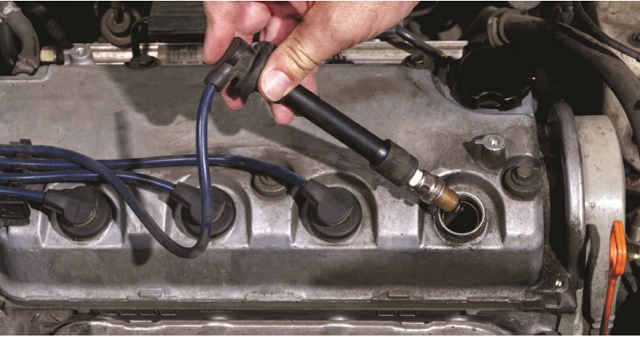
Check your spark plug wires and more
By Motoring Guru
Does your engine shake so badly when idling that you feel like you are sitting on an earthquake? Does the steering wheel vibrate as if it is hitting an endless line of tiny pot-holes? Finally, does the engine just switch off? If any or all of these things happen to your vehicle, then you most likely are experiencing your engine cylinders misfiring. And if the cylinders misfire, it could mean you have faulty spark plug wires. Please note it could be many things, but in this case, we wants to talk about faulty spark plug wires as the possible cause.
Apart from the rough idling and loss of power described above, cylinder misfiring can also cause problems starting the vehicle, especially on cold mornings and might also lead to increase fuel consumption. On newer cars, it can cause the Check Engine light to illuminate. So, clearly, this problem needs to be fixed as quickly as possible. What you must know from the start is that failure of spark plug wires is normal wear and tear and manufacturers recommend a change whenever an engine tune up is done.
But, to avoid the danger of running so fast that we go past our destination, we need to understand what the so-called spark plug wires are?
These are wires whose purpose is given away by their other name, which is `ignition cables’.
Spark plug wires carry current from the ignition coil(s) in the distributor (which converts the low voltage current from the battery to the high voltage current which ignites the engine) to the spark plugs.
On very old vehicles, from the 1990s and earlier, the spark plug wires run from the distributor cap to the plugs and are of different lengths – with the longest going to the furthest plug from the distributor and the shortest going to the nearest. The spark plug wire set also includes an extra wire that connects the center terminal on the distributor cap to the ignition coil (unless the application is a GM HEI distributor where the coil mounted inside the top of the cap).
On so-called Coil-on-Plug (COP) ignition systems, there are no plug wires because the coils are mounted directly on top of the spark plugs. Other engines use Coil-Near-plug (CNP) systems which use short wires to connect the coils and plugs. On still other engines, the wires are part of each coil assembly and cannot be replaced separately.
On engines with Distributorless Ignition systems (DIS), plug wires are also used to connect the coils to their respective spark plugs. On some engines, there is one coil per spark plug, while on others with “waste spark” ignitions, two plugs share each coil.
Without going into the technicalities of resistance and voltage, it suffices to say that malfunctioning spark plug wires can cause a vehicle to fail or have difficulty starting, increase fuel consumption, cause the vehicle to vibrate uncomfortably, and even become an environmental hazard due to increased hydrocarbon (HC) emissions.
Tips for spark plug wire maintenance
- Check them if vehicle presents and any of the symptoms discussed above.
- Check them whenever spark plugs are changed.
- Look for burning, cracks, chaffing, and looseness of boots and terminals.
- Replace faulty wires or preferably whole set.
- Ensure replacement spark plug wires are same length as original. Failure to do this could cause engine not to start, pop, or backfire. This may damage the engine.
 The Independent Uganda: You get the Truth we Pay the Price
The Independent Uganda: You get the Truth we Pay the Price



Sometimes when the engine gets warmed up my car shakes at idle but goes away and comes back. Is it because of bad performance of spark plug? The guidance you have given here about the reasons behind the shaking of my car. Thanks a lot for sharing.